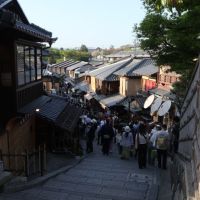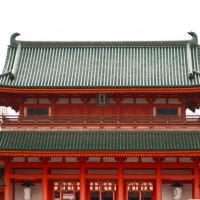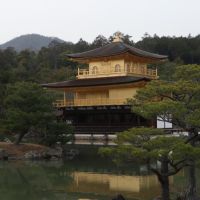Nijo Castle (Nijo-jo): A Guide to Kyoto’s Most Remarkable Castle
Masaya Osada
Latest posts by Masaya Osada (see all)
Nijo Castle was built by Tokugawa Ieyasu, the first shogun of the Edo Shogunate, and has been the setting for various historical events, including the announcement of the Great Restoration that led to the end of the Edo shogunate.
Registered as a World Heritage site, the castle is a representative of the samurai-style shoin-style castle and attracts many tourists with its gorgeous Ninomaru Palace, designated as a National Treasure, Honmaru Palace, a precious remnant of the Katsura Palace family, and three gardens of different styles.
Let’s take a look at its history, features, and highlights.
Contents
Nijo Castle History in Brief
Nijo Castle has many stories to tell. The castle was built by Ieyasu Tokugawa, the first shogun of the Edo Shogunate, and renovated during the reign of Tokugawa Iemitsu, the third shogun, for the Emperor Gosuio’s excursions. Gyoko means emperor’s excursion.
The Honmaru Goten and Ninomaru Goten were expanded to their present scale, and famous painters of the Kano school completed magnificent barrier paintings that fully show the prestige of the shogunate.
But here is where things really get interesting: In 1867, the 15th shogun, Yoshinobu, issued a landmark imperial edict in the Ninomaru Palace, declaring an end to the more than 260-year rule of the Edo shogunate through the “Great Government Restoration.”
With a history that has been with the shogunate for generations, Nijo Castle is truly a cultural treasure house that reflects the glory of a bygone era. The wonderful cultural assets in the Nijo Castle collection are not to be missed.
How to Get to Nijo Castle
The distance from Kyoto Station to Nijo Castle is not very far, and the time required is relatively short. Subway stations and bus stops are also nearby, making access from Kyoto Station convenient.
From Kyoto Station by Subway
From Kyoto Station, take the Subway Karasuma Line to Karasuma-Oike Station, transfer to the Tozai Line and get off at Nijojo-mae Station. The trip takes about 20 minutes and costs 260 yen one way.
From Kyoto Station by Kyoto City Bus
There are several bus routes from Kyoto Station to Nijo Castle, but they all take about the same amount of time. Some buses go directly from the Kyoto Station bus stop to Nijo Castle without changing buses.
The city bus lines 9 and 50 are recommended as they are very frequent. The trip takes about 20 minutes and costs 230 yen one way.
Opening Hours & Entrance Fee
Visit just after opening or just before closing to avoid crowds.
Openig Hours
Nijo Castle is open from 8:45 am to 5:00 pm. However, admission is until 4:00 p.m.
Closed Days
Nijo Castle is closed from December 29 to 31. On the other hand, Ninomaru-goten Palace is closed on Tuesdays in December and January, July and August, December 26 to 28, and January 1 to 3.
Note that if a national holiday falls on one of these days, the Ninomaru-goten Palace may be visited, but will be closed the following day.
Entrance Fee
Admission is 800 yen, plus 500 yen to enter the Ninomaru-goten Palace.
Watch this video. 1.25x speed will take you 4 minutes to watch!
5 Highlights of Nijo Castle
Nijo Castle is a vast castle with a total area of 275,000 square meters and a perimeter of approximately 2 kilometers. Below is a recommended map of a two-hour course for an efficient tour of Nijo Castle. Here are some of the highlights.
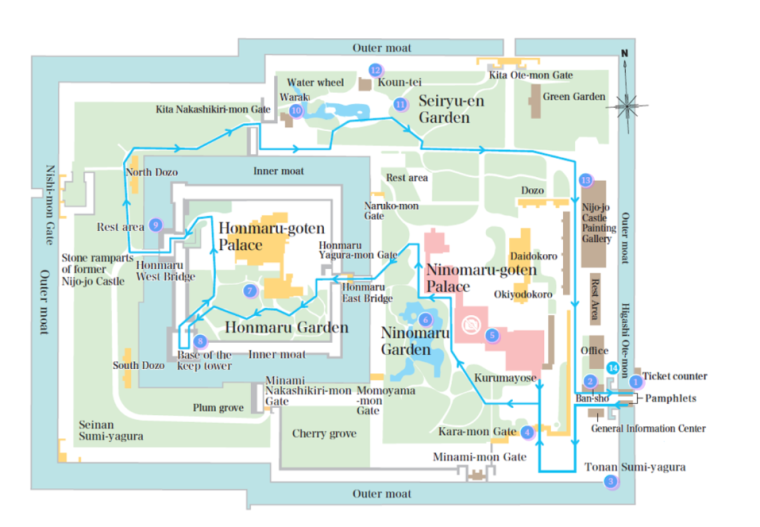
Source: Model Course | World Heritage Site Former Imperial Villa Nijo-jo Castle (Nijo-jo)
https://nijo-jocastle.city.kyoto.lg.jp/castle_guide/model_course/?lang=en
1.Kara-mon Gate (Map4)

The Kara-mon gate has the most magnificent presence as the main entrance to the Ninomaru-goten Palace.
The graceful contours of the majestic roof and the colorful carvings depicting symbols such as pine, bamboo, plum, cranes, and Chinese lions were painstakingly restored in 2013 and are truly breathtaking.
2.Ninomaru-goten Palace (Map4)

Nijo Castle is a valuable surviving residence of the Shogun and is designated as a National Treasure. The interior of Ninomaru-goten Palace boasts 33 rooms and over 800 tatami mats, and features overwhelming paintings depicting the Shogun’s majesty, including the famous “Pine Hawk” and murals of tigers and panthers.
The Ninomaru-goten Palace is considered an important building in the history of Japanese architecture as a representative example of the shoin-zukuri style of the early Edo period.
In addition, the famous “nightingale floor,” a corridor within the Ninomaru-goten Palace, allows intruders to be easily detected by the sound of their footsteps. When visiting the Ninomaru-goten Palace, listen carefully to the sounds of the corridors.
3.Ninomaru Garden (Map6)

Adjacent to Ninomaru-goten Palace is the Ninomaru Garden, a place of special scenic beauty. This shoin-style garden, renovated by Enshu Kobori for the Emperor Gosui’s visit, is said to be a recreation of Horai, where legend has it that immortal immortals live.
The garden is characterized by a myriad of stone arrangements along the banks of the pond, giving it a sense of power and strength. It is a must-see garden representing Kyoto, its beauty can be appreciated from any angle.
4.Honmaru-goten Palace and Gardens (Map7)

Built by Tokugawa Iemitsu in 1626, the Honmaru-goten Palace consisted of a five-story castle tower and four palaces, but was destroyed by lightning and a large fire.
The present Honmaru-goten Palace was moved from the former Katsura Detached Palace of the Kyoto Imperial Palace in the mid-Meiji period, and is designated as an Important Cultural Property as a valuable remnant of the official residence.
The interior is decorated with paintings, and the “Flying Crane” by Kano Eigaku is especially wonderful.
Although there are many highlights, as of 2024, it is not open to the public due to conservation and repair work.
The Honmaru Garden was created by order of Emperor Meiji. The garden has a hill in the southeast corner, a lawn, a curving wall, stone steps, and in places, lanterns and garden stones, showing the influence of Western-style gardens.
5.Seiryu-en Garden (Map11)

In 1965, Seiryu-en Garden, which still exists to this day, was born. It was completed in the same year, using part of the former Ryo Kadokura residence in Kawaramachi Nijo, garden stones, garden trees, and other materials, as well as stones collected from all over Japan and donations from philanthropic individuals.
The garden is a blend of Japanese and Western styles, and there is also a tea ceremony room. It is a great place to take a break and will be introduced later.
Other Useful Information
Audio Guide Rental Service
Nijo Castle is entered through Higashi Ote-mon Gate (the East MainGate). An English audio guide is available for rent at the information desk just inside the gate. The rental fee is 600 yen per unit.
English Guided Tours
Nijo Castle offers daily guided tours by Kyoto City certified interpreter-guides. Each tour lasts approximately 60 minutes, with the first tour starting at 10:00 am and the second at 12:00 pm. The fee is 2,500 yen per person (not including entry fee).
The tours allow visitors to take their time to enjoy the history of Nijo Castle, the people associated with it, its artwork, architecture, and beautiful gardens. Visitors will also have access to areas that are off-limits to the general public.
Wagashi, Japanese Sweets Experience

Wakaku-an, a tea ceremony room at Nijo Castle. This tea house is a historically valuable building built using part of a 300-year-old mansion and about 800 pond stones from the garden. It is no exaggeration to say that it is one of the best spots in Kyoto where one can contemplate the ancient capital of Kyoto, while viewing the Seiryu-en Garden.
Here, visitors can enjoy matcha green tea, Japanese sweets, zenzai, and other delicacies. Also interesting is the “Ieyasu Parfait,” which is unique to Nijo Castle and is inspired by Tokugawa Ieyasu. This parfait is named after Tokugawa Ieyasu because it uses ingredients that were his staple and preserved foods.
Events
Various events are held at Nijo Castle each season. In spring, the “Cherry Blossom Festival” is held. The castle is home to approximately 300 cherry trees, from early bloomers to late bloomers, and visitors can enjoy their blooming for about a month.
At night, the castle is illuminated, creating a fantastic atmosphere. In autumn, the Nijo Castle Festival is held, where visitors can enjoy a different atmosphere from the daytime with illuminated autumn leaves and projection mapping. Nijo Castle at night is not to be missed.
Links
Check out the official Nijo Castle website.
World Heritage Site Former Imperial Villa Nijo-jo Castle (Nijo-jo)
Discover the historic allure of Nijo Castle, a testament to Kyoto’s samurai legacy, and immerse yourself in the profound cultural practices of Japan, such as the intriguing Hochoshiki Knife Ceremony. This unique ceremony, steeped in tradition, offers a glimpse into the ceremonial use of knives in Japanese culture, adding a captivating dimension to your visit.
https://www.hochoshiki-knifeceremony.com/
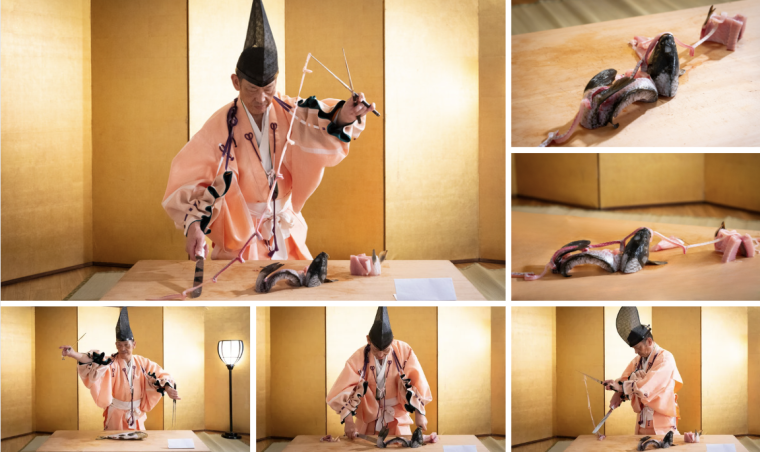
A sacred place for Japanese food, a treasure house of ingredients, Minami-Boso Takaya Shrine Kitchen knife ceremony "Ryumon-no-Koi" long story: edited by Minamiboso City Tourism Association Channel
Nijo Castle, Where the Spirit of the Warlords Still Lives On
Nijo Castle has witnessed the rise and fall of the Tokugawa family and other significant moments in Japanese history. Standing on this grand historical stage, one can feel the echoes of the past close at hand. Such a precious place should not be missed!


